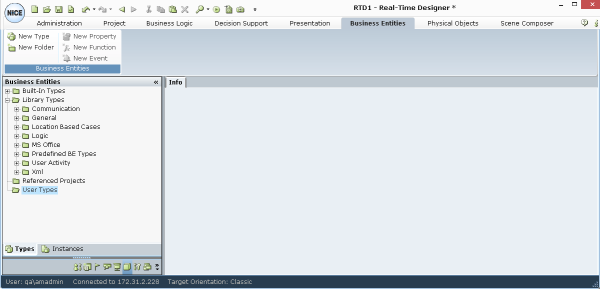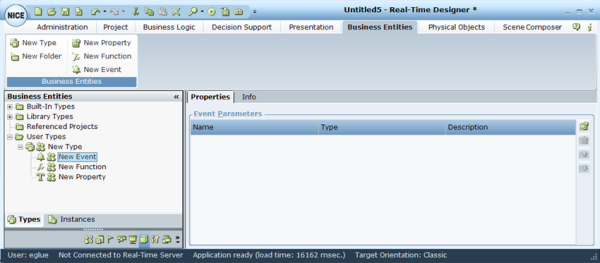Defining Business Entity Types
To define a Business Entity Type:
Click the Business Entities tab and then click the Types tab in the Business Entities pane.
To disable the default Public setting, in the System Settings window, navigate to Real-Time Designer > General and change the parameter BE As Public By Default to False.
The change appears only after loading or creating a new project.
The following options are available on the Business Entities ribbon:
New Type: Enables you to define a new business entity type. See Defining a Business Entity User Type.
New Property: Enables you to add a property to a business entity type. See Defining a User Type Property.
New Folder: Enables you to add a folder in which you can organize user types. Select the User Types branch or select a folder under it and then click New Folder:to define a new user types folder.
New Function: Enables you to add a function for this business entity type. See Defining a Business Entity Function.
New Event: Enables you to add an event. See Defining a Business Entity Type Event.
Business Entity Type Tree: Shows a hierarchical tree of the business entities defined under User Types . Real-Time Designer also provides built-in types and library types. These predefined types cannot be edited.
Built-in types are primitive data types that you can use when defining your own user types, such as a date.
Library types are defined externally, and are used as templates in defining user business entities.
Real-Time Designer shows the user types in the tree:
Each business entity user type that is defined appears as a sub-branch of the User Types branch.
Each property appears as a sub-branch of the business entity user type to which it belongs.







